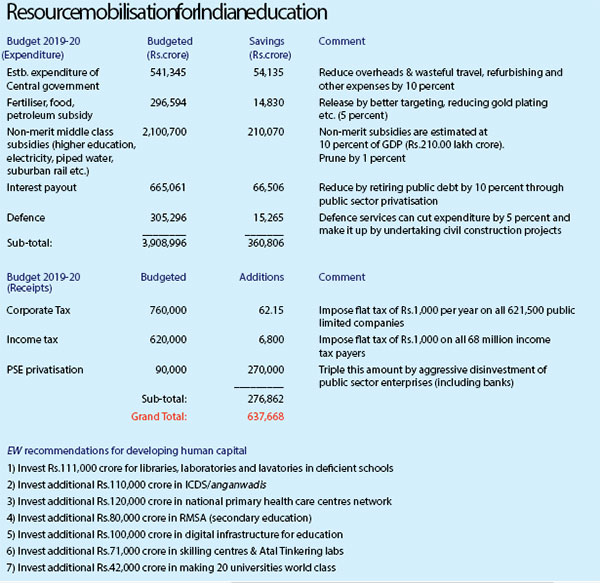The incapability of the Kasturirangan Committee members to shed naive belief that flogging the dead horse of government control and command of the education system will rejuvenate it, is likely to reduce the voluminous NEP draft report to yet another elaborate exercise in futility – Dilip Thakore
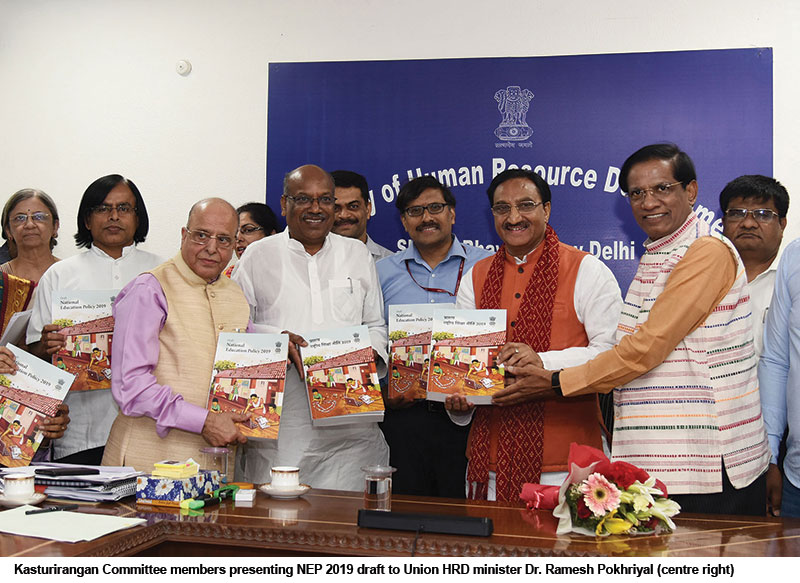
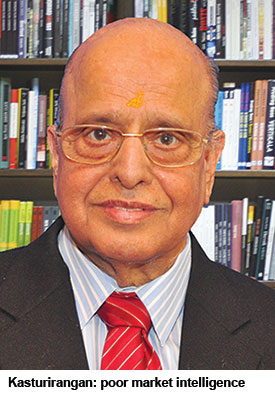 The long-awaited New National Education Policy (NEP) draft submitted by the nine-member committee of academics chaired by eminent space scientist K. Kasturirangan, former chairman of ISRO (Indian Space Research Organisation), to the Union HRD (human resource development) ministry on December 15 last year, was released for public debate on May 30. The Kasturirangan (KR) Committee had been constituted in June 2017 by the BJP/NDA government to prepare a new draft NEP after the 217-page draft NEP of the TSR Subramanian Committee proved inconvenient, because it criticised “corruption and inefficiency of education management at all levels”. It recommended greater autonomy for higher education institutions, and an increase in the national (Centre plus
The long-awaited New National Education Policy (NEP) draft submitted by the nine-member committee of academics chaired by eminent space scientist K. Kasturirangan, former chairman of ISRO (Indian Space Research Organisation), to the Union HRD (human resource development) ministry on December 15 last year, was released for public debate on May 30. The Kasturirangan (KR) Committee had been constituted in June 2017 by the BJP/NDA government to prepare a new draft NEP after the 217-page draft NEP of the TSR Subramanian Committee proved inconvenient, because it criticised “corruption and inefficiency of education management at all levels”. It recommended greater autonomy for higher education institutions, and an increase in the national (Centre plus 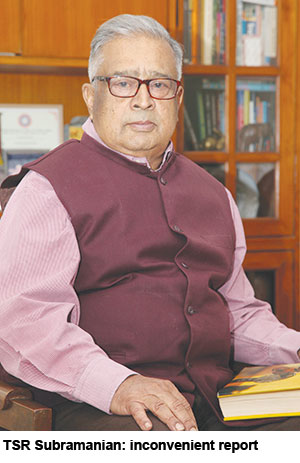 states) annual outlay for education to 6 percent of GDP “without further delay”. This would have required the Central government’s budgetary provision for education to rise from 0.45 percent of GDP to at least 2.5 percent. Therefore, it was transformed into a mere “input” for the KR Committee.
states) annual outlay for education to 6 percent of GDP “without further delay”. This would have required the Central government’s budgetary provision for education to rise from 0.45 percent of GDP to at least 2.5 percent. Therefore, it was transformed into a mere “input” for the KR Committee.
However, as soon as it was released for public scrutiny and debate, after General Election 2019 in which the incumbent BJP/NDA government was swept back into office in New Delhi with a two-thirds majority in the Lok Sabha, the KR Committee’s report triggered a storm. Several political parties of southern India — notably the opposition DMK in Tamil Nadu and the JD (S) in Karnataka — took exception to the languages learning prescription written by the committee comprising eight academics of no special distinction. It speaks volumes of the market intelligence of the committee that despite the huge Dravidian anti-Hindi agitation of the 1960s in south India, the KR Committee again recommended the rejected three-languages formula for primary-secondary school children. Way back in the 1960s following a constitutional mandate, the then Congress government at the Centre made the study of the state language, Hindi and English compulsory, prompting riots in Tamil Nadu during which dozens of people immolated themselves in protest against “Hindi imperialism”. The KR Committee members also seem to have been unaware that substitution of English with Sinhalese as the national language of neighbouring Sri Lanka in 1956 alienated the country’s Tamil minority and provoked a decade-long civil war that ended only recently in 2009.
Following the outbreak of widespread protests in the south immediately after the NEP 2019 draft was made public, the newly-elected BJP/NDA government was quick to mollify public opinion by stating that the KR Committee’s report was a mere recommendation to the Central government which has no intention of re-introducing the three-languages learning programme in school education. Moreover in several media interviews, Kasturirangan clarified that the committee had recommended that children should learn their mother tongue, English and any other Indian language. Shortly thereafter, the HRD ministry’s website went off air for two-three days before an amended draft NEP 2019 with the latter recommendation — mother tongue, English and any other Indian language — was incorporated into the new draft report.
On the issue of medium of instruction in primary education, there’s more evidence of the KR Committee’s poor market intelligence. It should have been aware that in 1994, the Karnataka government had made Kannada the compulsory medium of instruction for all greenfield primary schools established from that year onward. The result was widespread corruption within the state education ministry, as school inspectors and education officials turned a blind eye to thousands of English-medium primaries promoted statewide, and continuous litigation. Moreover, the committee should have been aware that in Karnataka vs. Associated Managements of (Government Recognised Unaided English Medium) Primary & Secondary Schools (2013), the Supreme Court had decisively ruled that all things considered, the choice of medium of instruction in which children study should be left to their parents.
The inadequate market intelligence of the KR Committee evidenced by its revival of the three-languages prescription — in Tamil Nadu, a two-languages school system has been smoothly followed for over half a century — and the medium of instruction issue, is the natural outcome of the composition of the nine-member drafting committee. Apart from chairman Dr. Kasturirangan who served as chariman of ISRO for nine years before retiring in 2003, the other members of the committee were Prof. Vasudha Kamat, former vice chancellor of SNDT Women’s University, Mumbai; Prof. Manjul Bhargava of the maths faculty, Princeton University, USA; Dr. Ram Shankar Kureel, former founder-VC of the Babasaheb Ambedkar University of Social Sciences, Madhya Pradesh; Prof. T.V. Kattamani, VC, Amarkantak University (Madhya Pradesh); Krishna Mohan Tripathy, former chairman of the Uttar Pradesh High School & Intermediate Examinations Board; Prof. Mazhar Asif, dean, Centre for Persian and Central Asian Studies, Jawaharlal Nehru University, Delhi; Prof. M.K. Sridhar, former member secretary of the Karnataka Knowledge Commission with Dr. Shakila Shamshu of the Union HRD ministry serving as secretary of the committee.
Although women and backward states were represented in the KR Committee, it’s very strange that neither a representative of Indian industry nor agriculture were included in the drafting committee. Inevitably, these are the sectors in which school-leavers and university graduates will seek — and perhaps find — gainful employment. Despite this obvious reality, neither in the predecessor TSR Subramanian nor the KR Committee, was representation given to industry, agriculture or service sector leaders. Curiously, the Union HRD ministry which appointed the members of the Subramanian and Kasturirangan committees — the majority of them academics of no special merit serving in isolated hinterland universities — is unaware that industry and business involvement in education policy formulation is normative in all industrially developed OECD countries. In the Netherlands, Sweden, Finland and Singapore, industry and business councils are deeply involved with shaping university, and even K-12 syllabuses.
Wishful thinking and pious sentiments devoid of assessment of the policy implementation capability of the government bureaucrats, particularly in the states, and realistic appreciation of the great contribution of private schools and latterly, privately promoted colleges and universities, in saving Indian education, are a common feature of the Subramanian and Kasturirangan committee reports. It’s high time governments at the Centre and in the states acknowledge that composition of policy reform committees chaired and driven by ivory tower academics and bureaucrats who shaped the country’s failed socio-economic, industrial, agriculture and education policies, is an exercise in futility. Such committees comprising individuals who designed the ancien regime are highly unlikely to suggest radical root and branch reform required in all sectors of a clearly failed, centrally planned government and public sector-driven Indian economy. At best, they recommend trimming of the branches, as the KR Committee has done.
The plain truth of post-independence India’s education development history of which every academic employed in the government-dominated higher education system is in denial, is that the state-managed education system has failed, while privately managed schools and higher education institutions have relatively succeeded, particularly in K-12 education. Only an ignoramus would deny that the country’s estimated 300,000 private pre-primary schools are far superior in terms of the quality of ECCE (early childhood care and education) they provide to youngest children, than the Central government-promoted anganwadis which host 50 percent of India’s 164 million children in the 0-5 age group. Similarly, the country’s 320,000 recognised private unaided schools which host an estimated 40 percent of all primary-secondary children countrywide, provide infinitely superior and cost-effective education compared to 1.20 million Central and state government schools.
Even the country’s estimated 400,000 fees-levying private budget schools — many of them ‘unrecognised’ by government — which cater to low-income urban and rural households are popularly perceived to be superior to free-of-charge government schools which are fast emptying out across the country. It’s a telling commentary of the ideological bias and ostrich mindset of the neta-babu (politician-bureaucrat) brotherhood which misgoverns this country that not a single representative of private education institutions, which have more than half of the country’s students on their muster rolls, was appointed a member of the Subramanian and Kasturirangan committees. Little wonder that detailed education reform recommendations made by the Kothari Commission (1966), the New Education Policy 1986 (amended in 1992) and the Subramanian Committee (2016) have failed to arrest the continuous downslide in India’s school and higher education systems.
Despite their commendable achievements in institution building and development, private edupreneurs and innovators are routinely shut out of the education policy formulation process. In the preamble of the NEP 2019 draft, the KR Committee claims that it “began receiving requests for meetings from individuals, institutions, organisations and groups of people” who were all given a hearing despite the open invitation “transforming into an avalanche”. In a prefatory Note of Gratitude, Dr. Kasturirangan acknowledges that “in order to give final shape to the policy, including editorial work as well as style of presentation,” the committee invited Prof. K. Ramachandran of the National Institute of Educational Planning and Administration, Delhi and Anurag Behar, vice chancellor of Azim Premji University; Jayaprakash Narayan of the Foundation of Democratic Reforms; Prof. P. Rama Rao of the Indian Institute of Science; T.V. Mohandas Pai, chairman of Manipal Global Education; Dr. Vijay Kelkar (“leading intellectual”) and Prof. J.S. Rajput, former chairman of NCERT during the Vajpayee-led BJP government. But it’s pertinent to note that almost all of them are establishment academics. Nobody from India Inc or a private sector education institution (except perhaps Mohandas Pai) was invited to depose before the committee.
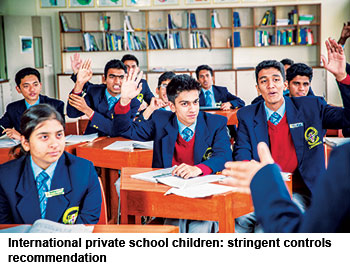 Given the on-the-ground reality that over 50 percent of the country’s students are enrolled in privately-managed schools, colleges and universities, packing the KR Committee with retired academics from globally bottom-ranked universities and chaired by a retired space scientist, is an exercise in futility, if not a cosmetic exercise to maintain the status quo. And even if not accommodated within the membership of the KR Committee, surely education leaders and experts such as Prof. Geeta Kingdon, chairperson of the Institute of Education at University College, London and president of the City Montessori School, Lucknow (the world’s most populous (55,000 students) city school according to Guinness Book of World Records); Damodar Goyal, chairman of the Society of Unaided Schools of Rajasthan; Kulbhushan Sharma of the National Independent Schools Alliance which represents the country’s estimated 400,000 private budget schools, should have been invited
Given the on-the-ground reality that over 50 percent of the country’s students are enrolled in privately-managed schools, colleges and universities, packing the KR Committee with retired academics from globally bottom-ranked universities and chaired by a retired space scientist, is an exercise in futility, if not a cosmetic exercise to maintain the status quo. And even if not accommodated within the membership of the KR Committee, surely education leaders and experts such as Prof. Geeta Kingdon, chairperson of the Institute of Education at University College, London and president of the City Montessori School, Lucknow (the world’s most populous (55,000 students) city school according to Guinness Book of World Records); Damodar Goyal, chairman of the Society of Unaided Schools of Rajasthan; Kulbhushan Sharma of the National Independent Schools Alliance which represents the country’s estimated 400,000 private budget schools, should have been invited 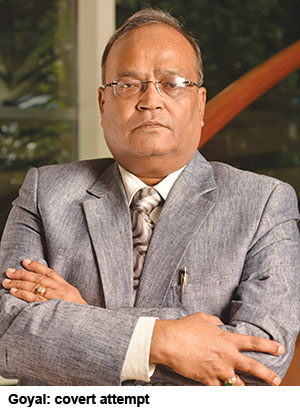 to provide their views and insights to the committee. Enquiries made by our correspondent indicate that none of them were invited to depose before the KR Committee. Although Prof. Kingdon gate-crashed the committee, “not even one” of her reform proposals are reflected in the NEP 2019 policy draft.
to provide their views and insights to the committee. Enquiries made by our correspondent indicate that none of them were invited to depose before the KR Committee. Although Prof. Kingdon gate-crashed the committee, “not even one” of her reform proposals are reflected in the NEP 2019 policy draft.
Nor despite almost two decades of uninterrupted publication to attain our mission statement, viz, “to build the pressure of public opinion to make education the #1 item on the national agenda” was your editor or any representative of EducationWorld invited by the Subramanian or KR committees to depose before either of them. The general attitude of supercilious academics is hostility and contempt for this sui generis publication for trespassing on their turf.
The contempt that the KR Committee packed with academics of statist and leftist mind-sets, entertains towards private initiatives in education is reflected not only in its manifest reluctance to invite private school, college or university leaders to advise it, but also in its recommendations for stringent government control of private education institutions.
Despite a mountain of evidence accumulated over the past seven decades indicating that the State has miserably failed to deliver minimally acceptable standard schools, college and universities, the KR Committee recommends greater — instead of reduced — government regulation of private education institutions. The logic of government minding its own business and improving learning outcomes in government education institutions which are pitch-forking millions of completely unprepared children and youth into higher education and the industry, agriculture, government and services sectors where they drive down productivity, is all too evidently beyond the ken of the career academics who shaped and wrote the 477-page NEP 2019 report.They are incapable of leaving private education institutions to be regulated by the invisible hand of the market or at best lightly regulated to attain broader national objectives.
The schizophrenic establishment bias against the country’s 320,000 private unaided schools — schizophrenic because members of the neta-babu brotherhood and the academy overwhelmingly enrol their own progeny in private schools — is evident in a dismissive two-page Chapter 8.3 titled ‘Regulation, accreditation and oversight of private schools’. In this chapter, the committee distinguishes between “private philanthropic schools” and “schools run as commercial enterprises” with the former to be encouraged and the latter “which vitiate the basic public good nature of education must be stopped”, says the report, reiterating that education and schools are “not marketable goods”.
If the committee was aware of the import of the judgement of a full 13-judge bench of the Supreme Court in T.M.A.
Pai Foundation vs. Union of India (2002) in which the apex court ruled that promotion of educational institutions of his/her choice is the fundamental right of every citizen, and that engagement in the “vocation” of education provision is also a fundamental right under Article 19 (1) (g) of the Constitution, and earning reasonable profit from this vocation is inherent in this right, it shows no evidence of this knowledge. Unsurprisingly the rights of school promoters who often invest their life savings to establish education institutions in a spirit of enlightened self-interest are not mentioned at all in chapter 8.3 or elsewhere in this voluminous report.
On the contrary, the KR Committee slyly transfers the function of management of private schools to School Management Committees (SMCs) stipulated by the Right of Children to Free & Compulsory Education (RTE) Act, 2009. “All private schools must form an SMC like any public school and have an SDP (school development plan) reviewed and endorsed by the SMC on a continuous basis,” says para 8.3.5 of the KR Committee’s report. In this connection, it’s pertinent to note that SMCs, whose membership is specified by s.21 of the RTE Act, specifically excludes private unaided schools. In the circumstances, the KR Committee implicitly attempts to transfer the responsibility of managing private schools to SMCs wholly dominated by unqualified parents and government education officials with notorious reputation for corruption and ineptitude, reducing promoters to mere ciphers. This is tantamount to backdoor socialisation and a prescription for levelling down private schools to public school standards.
“The KR Committee’s endorsement of SMCs for private unaided schools is either an oversight or a covert attempt to transfer the management of private unaided schools to parents and government officials. But it is unlikely to withstand judicial scrutiny because s.21 of the RTE Act, specifically exempts private unaided schools from establishing SMCs. The committee also seems unaware that in the T.M.A. Pai Foundation Case (2002), a full 13-judges bench of the Supreme Court held that promoters of private unaided education institutions have absolute power to manage and administer them without any interference from government,” says Damodar Goyal, president of the Association of Unaided Schools of Rajasthan. In 2012, the association challenged s.12 (1) (c) of the RTE Act which obliges all private unaided schools to reserve 25 percent of capacity in primary classes (I-VIII) for poor children in their neighbourhood and provide them almost free-of-charge elementary education. The association won a famous partial victory when the Supreme Court exempted minority schools from this obligation.
Unsurprisingly given the composition of the KR Committee, no specific mention is made in its draft report of the important role discharged by the country’s 320,000 private unaided ‘recognised’ primary-secondary schools in educating India’s 300 million-strong middle class which has kept the wheels of industry, services and government turning, howsoever slowly. On the other hand, the committee’s report repeatedly commends ‘philanthropic’ private schools while disparaging for-profit private schools. This has enraged not a few private school promoters and managers.
“Unlike any major country around the world where the percentage of students attending unaided independent schools barely reaches double digits, about 40 percent of children in India attend private unaided schools to which there is continuous migration of students from government schools. But although the number of independent schools has grown exponentially, the KR Committee’s school education reform recommendations make no distinction between regulations framed to govern government and private schools. This creates confusion at the policy implementation level and often prompts litigation. The proposal in the draft NEP 2019 of private aided and independent schools constituting SMCs “like any public school” if accepted by government will reduce the role of private independent school promoters to that of mere bystanders. It is high time government mandates a separate 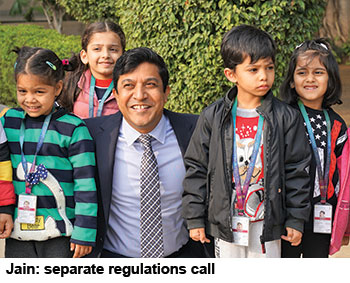 set of regulations governing independently-funded schools,” says Manit Jain, an alum of the Harvard School of Education and currently co-founder and director of the top-ranked Heritage Xperiential Learning School, Gurgaon and two other Heritage schools in Delhi NCR, which are setting new standards and benchmarks in K-12 education. Despite being a nationally respected educationist who has delivered proof of concept in three primary-secondary schools in Delhi NCR, ranked among the country’s Top 10 co-ed day schools in the latest EducationWorld India School Rankings 2018-19, Jain wasn’t invited to depose before the KR Committee.
set of regulations governing independently-funded schools,” says Manit Jain, an alum of the Harvard School of Education and currently co-founder and director of the top-ranked Heritage Xperiential Learning School, Gurgaon and two other Heritage schools in Delhi NCR, which are setting new standards and benchmarks in K-12 education. Despite being a nationally respected educationist who has delivered proof of concept in three primary-secondary schools in Delhi NCR, ranked among the country’s Top 10 co-ed day schools in the latest EducationWorld India School Rankings 2018-19, Jain wasn’t invited to depose before the KR Committee.
Another highly knowledgeable educationist who has established a national — perhaps international — reputation as an ECCE (early childhood care and education) champion who should have been invited by the KR Committee to aid and abet its deliberations is Dr. Swati Popat Vats. Currently, 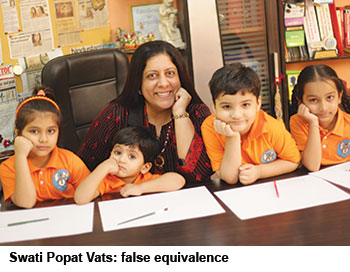 Popat Vats is president of the 480-strong Podar Jumbo Kids national chain of owned and franchised preschools and also founder-president of the Early Childhood Association of India (ECAI, estb.2010), which together with EducationWorld (which has staged eight pioneer National ECCE Conferences) has relentlessly lobbied for reaching professionally administered ECCE to India’s 164 million hitherto neglected children in the 0-5 age group. Although she derives “great satisfaction” from the high importance that the KR Committee has accorded ECCE, and for transferring it from the jurisdiction of the Union ministry of women and child development to the HRD ministry — a longstanding demand of ECAI — Popat Vats is also dismayed by the false equivalence accorded to the country’s over 1.6 million government anganwadis — essentially early childhood nutrition centres for newborn and lactating mothers which are also mandated to provide ECCE — and the country’s estimated 300,000 private preschools which provide (or attempt to provide) professionally-administered ECCE.
Popat Vats is president of the 480-strong Podar Jumbo Kids national chain of owned and franchised preschools and also founder-president of the Early Childhood Association of India (ECAI, estb.2010), which together with EducationWorld (which has staged eight pioneer National ECCE Conferences) has relentlessly lobbied for reaching professionally administered ECCE to India’s 164 million hitherto neglected children in the 0-5 age group. Although she derives “great satisfaction” from the high importance that the KR Committee has accorded ECCE, and for transferring it from the jurisdiction of the Union ministry of women and child development to the HRD ministry — a longstanding demand of ECAI — Popat Vats is also dismayed by the false equivalence accorded to the country’s over 1.6 million government anganwadis — essentially early childhood nutrition centres for newborn and lactating mothers which are also mandated to provide ECCE — and the country’s estimated 300,000 private preschools which provide (or attempt to provide) professionally-administered ECCE.
The plain truth is that anganwadis are mainly nutrition centres for half of the country’s children in the 0-6 group. The early childhood education they provide is of very poor quality. Therefore, the KR Committee should have recommended that anganwadis are raised to the level of private preschools, particularly ECAI member institutions. Instead even the country’s pioneer private preschools, many of whom are of international standard, are accorded equivalence with severely under-resourced anganwadis and subject to the same rules and regulations. The huge role played by private independent preschools in impacting the importance of ECCE on the public mind is not at all acknowledged by the KR Committee. The role of private pre-primaries needs to be clarified and legitimised,” says Popat Vats.
However, a notable feature of the draft NEP 2019 is that it fulfils the BJP’s 2014 election manifesto promise of establishing a National Education Commission, aka Rashtriya Shiksha Aayog (RSA) as the apex body “responsible for developing, articulating, implementing, evaluating and revising the vision of education in the country on a continuous and sustained basis… (and) also create and oversee the institutional frameworks that will help achieve this vision”.
In its enthusiasm to ensure top-level attention for education reform, the KR Committee recommends the prime minister as chairman of the RSA with the Union minister of education (it recommends a change of name of the Union HRD ministry to “bring back the focus to education and learning”) as vice chairperson. Members of the apex-level RSA will be Union ministers of ministries that “impact education directly” such as health, women and child development, finance and a few chief ministers of states in rotation, principal secretary to the prime minister, cabinet secretary and vice chairman of NITI Aayog and senior secretary in the ministry of education and “other such bureaucrats/administrators as the government may deem appropriate” subject to at least 50 percent of the members being “eminent educationists, researchers and leading professionals from various fields such as arts, business, health, agriculture and social work”. Appointments to the RSA will be made by an RSA appointments committee (RSAAC) comprising the PM, chief justice of India, leader of the opposition in Parliament and speaker of the Lok Sabha.
The KR Committee also recommends the establishment of an RSA executive council to be chaired by the Union minister of education and appointment of an executive director (ED) who will also be vice chairperson of the council. The ED “will be a person of eminence in education with deep understanding of India’s education system, a record of stellar public contribution and broad experience of administration and leadership” with a five-year term. This structure is recommended for replication in the states — Rajya Shiksha Aayog/State Education Commission (SEC) chaired by the chief minister with the minister of education as vice chairman and a similar membership as of RSA. “The creation of the SECs in the states will facilitate better coordination with centre,” says the NEP 2019 draft.
While with a genuinely reformist intent, the KR Committee has taken care to ensure that the RSA/National Education Commission constituted to supervise pre-primary to class XII education countrywide is impartial and empowered, given its composition it has increased, rather than reduced, government involvement and control of the education system. The RSA/NEC and RjSA/SEC, chaired by the prime minister and chief minister with the Union education and state education ministers of ephemeral governments and packed by their appointees, will result in heavy politicisation of the education system.
Ditto within the states where a State School Regulatory Authority (SSRA) “will be established to handle all aspects of school regulation including the oversight of the school system and implementation of accreditation”. The independent SSRA will comprise a chairperson appointed by the RjSA/chief minister and 10-15 members of high integrity and unimpeachable track record with expertise in education and other relevant areas. As noted earlier, the SSRA will also adjudicate tuition fees levied by private schools and any grievances of the public.
This heavy involvement of government with every facet of K-12 education sits at odds with the ruling BJP’s slogan of minimum government and maximum governance. And the KR Committee’s directives that educationists of unimpeachable integrity and reputation will be appointed to positions of authority within heavily government-dominated institutions reflects naivete and unawareness that such supervisory councils and organisations are routinely packed with under-qualified party elders required to be given sinecures.
“The KR Committee’s recommendations for the reform of Indian education is a utopian wish list. It pays scant attention to the implementation capability or resources of the Central and state governments. The truth is that the wider goals of access and improved learning outcomes proposed by the committee cannot be achieved without the expansion and cooperation of private schools which host 40 percent of the country’s 250 million school-going children, actually 60 percent if children in private budget schools are included. However, private unaided schools 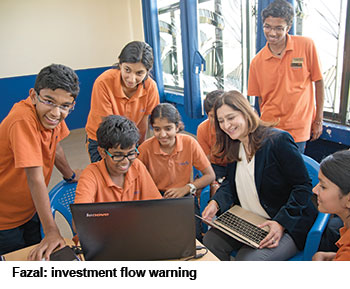 will continue to be subject to strict licensing and controls and are expected to be handed over on a platter to SMCs dominated by parents and government officials. With private education continuing to be subject to the licence-permit-quota regime, the flow of private investment into education will dry up,” warns Nooraine Fazal, promoter-director of the highly-fancied Inventure Academy, Bangalore, ranked among India’s Top 10 co-ed day schools in the latest EW India School Rankings 2018-19 and #2 in Karnataka (pop. 63 million).
will continue to be subject to strict licensing and controls and are expected to be handed over on a platter to SMCs dominated by parents and government officials. With private education continuing to be subject to the licence-permit-quota regime, the flow of private investment into education will dry up,” warns Nooraine Fazal, promoter-director of the highly-fancied Inventure Academy, Bangalore, ranked among India’s Top 10 co-ed day schools in the latest EW India School Rankings 2018-19 and #2 in Karnataka (pop. 63 million).
Likewise, Prof. Geeta Kingdon, chair of education economics and international development at the Institute of Education of University College, London and president of the City Montessori School, ranked the #1 co-ed day school in Uttar Pradesh (pop. 215 million) in the EW India School Rankings 2018-19, believes that although the KR Committee has proposed wide-ranging reforms across the spectrum of Indian education, it has failed to diagnose and address the most grievous maladies of the K-12 education system.
“The elephant in the room which the KR Committee hasn’t noticed, is the utter lack of accountability of managements and teachers of the country’s 1.20 million government schools. Because of poor learning outcomes in government schools as repeatedly highlighted by the Pratham Education Foundation’s ASER surveys, there’s a continuous exodus of children from them. In the period 2010-2017, 24.5 million children were withdrawn from government primary schools. Moreover on any given day, 25 percent of well-paid teachers of government schools countrywide are absent from classes. That’s the national average. In Uttar Pradesh, this percentage is higher at 31.5. Instead of understanding the depth of the crisis confronting the country’s government school system, the committee romantically believes that the empowered SMCs dominated by illiterate and quasi-literate parents and local 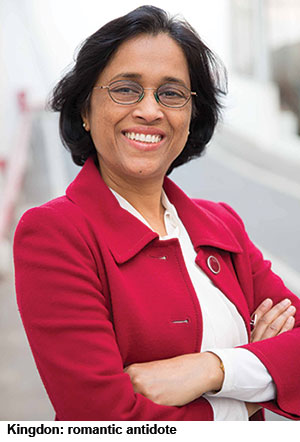 government officials, are the antidote to the ills of the public education system. They have overlooked the reality that SMCs were mandated by the RTE Act, 2009 and have completely failed to stem the rot in government schools. Despite this, the committee recommends SMCs and wider government controls over private schools,” says Kingdon.
government officials, are the antidote to the ills of the public education system. They have overlooked the reality that SMCs were mandated by the RTE Act, 2009 and have completely failed to stem the rot in government schools. Despite this, the committee recommends SMCs and wider government controls over private schools,” says Kingdon.
Nevertheless, a commendable feature of the comprehensive KR Committee’s NEP draft report is that it has addressed all segments of India’s education system, from KG to Ph D and has made valuable, even if impractical, reform recommendations for every sector. Perhaps the most important and socially beneficial recommendation made by the committee is that vocational education should be made compulsory in high school, colleges and universities.
Acknowledging that less than 5 percent of India’s workforce in the 19-24 years age group has received formal vocational education (cf. 52 percent in the US, 75 percent in Germany and 96 percent in South Korea), the policy draft recommends that 50 percent of all learners should be provided access to vocational education and training (VET) by 2025. “Vocational education must not be developed separately from ‘mainstream’ education… to develop the capacities and dispositions of individuals for economic independence, including employment and entrepreneurship,” write the authors of the report insightfully. The KR Committee recommends establishment of a National Committee for the Integration of Vocational Education (NCIVE) cutting across all ministries and the entire education sector to “reimagine vocational education”.
In a professedly socialist society in which most university graduates can’t fix a light bulb, the KR Committee’s 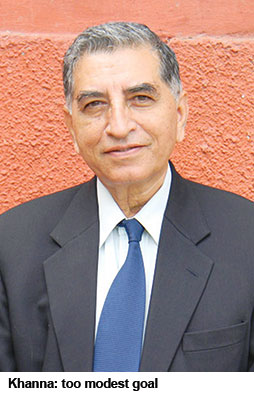 recommendation to integrate VET into mainstream education at all levels, is overdue. “The KR Committee has rightly drawn national attention to the shocking disparity in terms of vocational education between the workforce of South Korea and India, but it should have highlighted the importance of VET in nation-building, exports, productivity, quality, jobs and employment — the secret of Korea’s success. Now, after nearly 72 years of independence it recommends 50 percent of youth should have access to VET by 2025. This is too modest a goal. In particular, the draft NEP 2019 has overlooked the importance of VET in the agriculture sector which employs 50 percent of India’s 420 million workforce. We urgently need at least 250,000 VET centres to be established in rural India within five years — China has 350,000. While the KR Committee’s recommendations are welcome, they are insufficiently urgent. To really integrate VET into mainstream education as suggested by the committee, the Union skills and entrepreneurship development ministry should be merged with the HRD ministry,” says Krishan Khanna, an IIT-Kharagpur alum and promoter-chairman of iWatch India (regstd. 1992), an NGO which has been engaged in the promotion of VET for over 25 years. Although Khanna is by far the most knowledgeable and committed advocate of VET countrywide, he was not invited to depose before the KR Committee.
recommendation to integrate VET into mainstream education at all levels, is overdue. “The KR Committee has rightly drawn national attention to the shocking disparity in terms of vocational education between the workforce of South Korea and India, but it should have highlighted the importance of VET in nation-building, exports, productivity, quality, jobs and employment — the secret of Korea’s success. Now, after nearly 72 years of independence it recommends 50 percent of youth should have access to VET by 2025. This is too modest a goal. In particular, the draft NEP 2019 has overlooked the importance of VET in the agriculture sector which employs 50 percent of India’s 420 million workforce. We urgently need at least 250,000 VET centres to be established in rural India within five years — China has 350,000. While the KR Committee’s recommendations are welcome, they are insufficiently urgent. To really integrate VET into mainstream education as suggested by the committee, the Union skills and entrepreneurship development ministry should be merged with the HRD ministry,” says Krishan Khanna, an IIT-Kharagpur alum and promoter-chairman of iWatch India (regstd. 1992), an NGO which has been engaged in the promotion of VET for over 25 years. Although Khanna is by far the most knowledgeable and committed advocate of VET countrywide, he was not invited to depose before the KR Committee.
Undoubtedly given its composition, the most constructive and intelligent recommendations of the KR Committee are in the higher education sector. Condemning the system of ‘silo’ professional colleges being designated deemed universities, the committee advocates their expansion or amalgamation into large multi-disciplinary universities which offer students the opportunity to broad-base their education. This initiative, plus the recommendation that all professional and undergraduate programmes include an additional year of liberal arts education, is necessary and overdue. It addresses the dangerous phenomenon of narrowly specialised professionals in high positions who are often totally ignorant about the basic structure of the Constitution, rule of law and the history and geography of the country. By virtue of their success in their professional vocations, some technocrats enter public life and rise to high office where they create confusion and havoc. The KR Committee deplores this type of single vocation higher education and recommends that “professional education be integrated with liberal education”. More strongly, as “the most basic principle” of reforming the country’s moribund higher education, it recommends that the powers of regulation, provision of education, accreditation and standards setting currently vested in the University Grants Commission (UGC, estb.1956) — “fatal for academic growth” — should be performed by independent, empowered bodies.
In pursuit of the dissolution and separation of these functions, the KR Committee recommends the establishment of a National Higher Education Regulatory Authority (NHERA) as the sole regulator for all higher education institutions, including professional education institutes and empowerment of NAAC (National Assessment & Accreditation Council, estb.1994) to develop an ecosystem of multiple autonomous institutions and oversee the accreditation process with the UGC (to be renamed the Higher Education Grants Commission) restricted to disbursement of grants and scholarships. All other regulatory organisations such as NCTE, MCI, BCI and AICTE should transform into professional standard setting bodies (PSSBs).
Moreover, the committee recommends the establishment of a General Education Council “to define the attributes and learning expected from students who graduate from the higher education system”. The committee also advocates abolition of the college/university affiliation system under which undergrad colleges are obliged to affiliate with a university which prescribes its syllabus and conducts a common exam for affiliated colleges — with several universities affiliating over 400 colleges and awarding a common degree. This has been a long-standing demand of EducationWorld.
Commendably, the KR Committee laments “fragmentation” of the higher education system and favours the establishment of large multi-disciplinary universities. It highlights that over 40 percent of colleges countrywide “run only a single programme” and makes the shocking disclosure that over 20 percent of colleges have less than 100 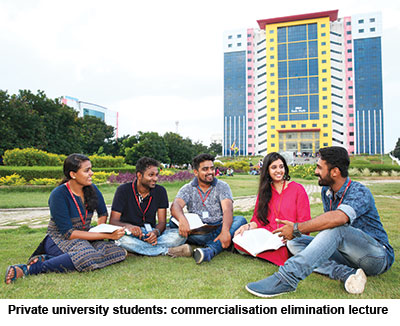 students. It also deplores that the lax regulatory system “allows fake colleges to thrive while constraining excellent, innovative institutions”. Therefore, it proposes the establishment of large multi-disciplinary HEIs (higher education institutions) “by consolidating, and restructuring existing institutions and building new ones including establishing new world-class model institutions of this type across the country”.
students. It also deplores that the lax regulatory system “allows fake colleges to thrive while constraining excellent, innovative institutions”. Therefore, it proposes the establishment of large multi-disciplinary HEIs (higher education institutions) “by consolidating, and restructuring existing institutions and building new ones including establishing new world-class model institutions of this type across the country”.
Undoubtedly, the restructuring and reforms recommended by the KR Committee for the higher education system, which include detailed attention to developing research capabilities of the proposed multi-disciplinary universities, are the best feature of its NEP 2019 draft and deserve serious consideration. “All higher education will happen in multi-disciplinary institutions with teaching programmes across disciplines and fields to ensure optimal resources, integration across disciplines and vibrant large education communities,” says the report which sets a target of doubling the GER (gross enrolment ratio) in higher education to 50 percent by 2035.
Nevertheless, although the committee mandates parity between public and private HEIs under NHERA, the establishment academics of the KR Committee can’t resist the temptation to lecture private HEIs (which outnumber public HEIs) on the “need to eliminate the commercialisation of education” and goes several steps further by ordering that at least 20 percent of students in each study programme of private universities should be given 100 percent fee waiver, and that at least 30 percent of students in each programme/course shall get 25-100 percent fee waivers on pain of discontinuation of the programme/course. This recommendation which flies in the face of the Supreme Court’s landmark judgement in the T.M.A. Pai Case (2002) constitutes unwarranted interference with the administrative autonomy of private HEIs and should be rejected prior to finalisation of NEP 2019.
Another blindspot of the KR Committee, which throughout its detailed report continuously underlines the need to develop world-class HEIs, is the widely-debated issue of the extent to which foreign universities should be permitted to involve themselves in Indian higher education, and whether they should be permitted to establish campuses in India.
“Although the KR Committee strongly recommends the internationalisation of India’s higher education system, its draft report is somewhat vague on several critical aspects of internationalisation. For instance the report is silent on the issue of inviting international faculty to teach in Indian HEIs. Moreover, though some references have been made in the committee’s report about an International Education Centre, no details are provided about its activities or mandate. There is also no mention of international collaborations for research purposes, although the KR Committee advises the HRD ministry to sign MoUs with specific countries for collaborations. However, details of how to enhance collaboration between universities in different regions of the world are not mentioned,” says Dr. Vinodh Bhat, vice chancellor of the Manipal Academy of Higher Education, adjudged India’s #1 private university by 4,321 sample respondents in the latest EducationWorld India Private University Rankings 2019-20 published in May.
According to Dr. Bhat, the NEP draft is vague about the issue of international universities being welcomed into the 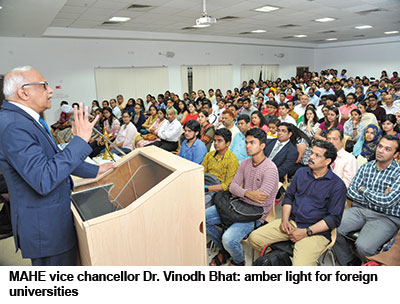 country other than the Top 200 are welcome to set up and function according to rules and regulations applicable to Indian universities. This condition is unlikely to attract them as they are accustomed to a much higher degree of academic, administrative and financial autonomy than allowed under Indian rules and regulations. “We should draw some lessons from neighbouring China which permits foreign HEIs to establish campuses in the country on the basis of special terms and conditions to provide world-class education at affordable price,” he adds.
country other than the Top 200 are welcome to set up and function according to rules and regulations applicable to Indian universities. This condition is unlikely to attract them as they are accustomed to a much higher degree of academic, administrative and financial autonomy than allowed under Indian rules and regulations. “We should draw some lessons from neighbouring China which permits foreign HEIs to establish campuses in the country on the basis of special terms and conditions to provide world-class education at affordable price,” he adds.
Debated, deliberated and written over a period of two years, inevitably the KR Committee’s draft NEP 2019 contains several valuable recommendations for the comprehensive reform of 21st century India’s obsolete education system across the board from pre-primary to Ph D. In particular, the committee’s endorsement of the vital importance of professionally administered ECCE (early childhood care and education) for all, grouping of government primary-secondaries into resource-sharing complexes, its insistence on syllabus/curriculum reforms to wean children away from rote learning and memorisation in favour of developing their critical thinking, analysis and problem-solving cognitive capabilities, strong endorsement of the virtues of mainstreaming vocational education into secondary and higher education, its proposal to scrap UGC and separate its regulatory operations, accreditation and assessment functions, incorporation of liberal arts into all higher education programmes and promotion of large self-sustaining multi-disciplinary universities, among other overdue proposals, are worthy of serious consideration.
Unfortunately, the KR Committee composed as it is of establishment academics with statist, if not shop-worn leftist mindsets, has not been able to resist the temptation to recommend strict control and command of private education institutions which to all intents and purposes are doing very well, especially when compared to government owned/managed schools and HEIs. The irony of recommending wider jurisdictional and regulatory powers to the Central and state governments, which have reduced the public education system and government education institutions across the education spectrum to pathetic condition. Despite a mountain of evidence that over the past 70 years since independence, strict government control of education has so demonstrably failed India’s national development effort, KR Committee members continue to repose naive faith in the resource mobilisation, project implementation and institution development capabilities of the neta-babu brotherhood.
What Indian education needs is the Central and state governments to focus on nurturing the country’s government-run 1.6 million anganwadis, 1.20 million primary-secondaries, and public undergrad colleges and HEIs and lightly, if at all, regulate private education institutions. The incapability of the KR Committee to shed its naive belief that flogging the dead horse of government control and command of the education system will rejuvenate it, is likely to reduce its voluminous report to yet another elaborate exercise in futility.
Major recommendations of Kasturirangan Committee
The National Education Policy 2019 draft presented by a nine-member committee of academics chaired by eminent space research scientist Dr. K. Kasturirangan on December 15 to the BJP/NDA government at the Centre, was released to the public in May this year after the BJP-led NDA government was returned to power at the Centre with a larger majority in General Election 2019. An improvement on the draft NEP presented by the TSR Subramanian Committee (2016), which was rejected by the previous BJP/NDA government and transformed into an “input” for the KR Committee, the NEP 2019 draft proposes an overhaul and restructuring of Indian education from pre-primary to Ph D. The major recommendations made in the 477-page report of the KR Committee are set out below.
Early Childhood Care and Education. Every child in the 3-6 years age group should have access to free, safe, high quality, developmentally appropriate care and education by 2025.
Primary School Education. By 2025, every student in grade/class V and beyond should have achieved foundational literacy and numeracy, i.e, “the ability to read and comprehend basic text and ability to carry out basic addition and subtraction with Indian numerals”. The KR Committee’s report warns that “if action is not taken soon, over the next few years the country could lose 10 crore (100 million) or more students from the learning system to illiteracy”.
Reintegrating Dropouts and Ensuring Universal Access to Education. Government and society must enable access and participation in free and compulsory quality school education for all children in the 3-18 years age group by 2030. Commenting that GER (gross enrolment ratio) in 2015 in classes VI-VIII was 91 percent and dropped to 51.3 percent in classes XI-XII, the committee estimates that 62 million children of school age (6-18) were out of school that year. “It must be a top priority of the country to bring these children back in the educational fold as early as possible, and to prevent further students from dropping out,” says the report.
Teacher Recruitment, Education & Development. The national objective should be to ensure that students at all levels of school education are taught by committed, motivated and highly qualified, professionally trained, and well-equipped teachers. “Teachers truly shape the futures of our children… they form the very heart of the education process and represent an indispensable vehicle towards a progressive, just, educated and prosperous society,” affirms the KR Committee report.
Efficient Resourcing & Effective Governance of Schools. Citing U-DISE 2016-17 data, the KR Committee says that 28 percent of the country’s public primary schools and 14.8 percent of public upper primaries have less than 30 students on their muster rolls. And in 2016-17, there were 119,303 single-teacher schools countrywide. To address this problem, an important and intelligent solution suggested by the committee is that government “schools should be grouped into school complexes to facilitate the sharing of resources and render schools governance more local, effective and efficient”. This will break the “severe isolation” of small schools with complexes “enabling substantially better resourcing across all schools” in a contiguous geography.
Regulation & Accreditation of School Education. The KR Committee proposes separation of the functions of policy formulation, regulation, operations and setting academic standards. In all states, the Department of School Education (DSE) or RjSA (Rajya Shiksha Aayog/State Education Commission) with the chief minister as chairman and education minister as vice chair will be the apex policymaking body. An independent SSRA (State School Regulatory Authority) “will handle all aspects of school regulation including oversight of the school system and implementation of accreditation”. The 10-15 member SSRA will report to the RjSA/chief minister and will hear and redress public grievances and have powers to shut down schools if accreditation norms are not satisfied. Under the proposed separation of powers, the DSE/ Director of Public Instruction will supervise the operations of the public/government school system with SCERT (State Council of Educational Research & Training) being the apex body on all academic matters. Finally, boards of assessment in every state will conduct examinations and certify students.
Regulation, Accreditation and Oversight of Private Schools. The KR Committee makes a distinction between private philanthropic private schools (good) and those run as “commercial enterprises” (bad). Private schools may no longer call themselves public schools — they must be not-for-profit, must appoint SMCs (School Management Committees) and adhere to s.8 of the Companies Act, 2013 disclosure norms. They may set their tuition fees but fee increases to be decided by the SSRA (State School Regulatory Authority) for three-year periods.
Vocational Education. The KR Committee recommends that vocational education is integrated into all education institutions — high schools, colleges and universities. They should provide vocational education and training (VET) to “at least 50 percent of all learners by 2025”. “All academic institutions will be required to integrate vocational education into their vocational offerings in a phased manner over the period of a decade.”
Higher Education. With the objective of increasing GER in higher education to 50 percent by 2035, the draft NEP 2019 recommends “ending of fragmentation of higher education by transforming higher education institutions into large multidisciplinary universities, each of which will aim to have upwards of 5,000 or more students.” Liberal arts education will be integrated into all higher education programmes. All universities will be divided into three types: research universities, teaching universities and undergraduate colleges “without sharp exclusionary categorisation”.
As in school education, the functions of regulation, provision of education, funding and standard setting will be separated. A National Higher Education Regulatory Authority (NHERA) will be the sole regulator for all higher education institutions, including professional education institutions. NAAC (National Assessment & Accreditation Council) will develop an ecosystem of multiple autonomous institutions and oversee the accreditation process. The currently all-powerful UGC will transform into the HEGC (Higher Education Grants Commission) for disbursing development grants and fellowships across the higher education sector, including professional education. All other existing regulatory organisations in higher education — NCTE (National Council for Teacher Education), MCI (Medical Council of India), BCI (Bar Council of India) and AICTE (All India Council for Technical Education) will morph into PSSBs (professional standard setting bodies). Moreover, a GEC (General Education Council) will set “expected learning outcomes” benchmarks for all graduates. The KR Committee acknowledges that “these transformative changes may take time and effort” and allows a period of five-seven years.
Technology in Education. To its credit, the draft NEP 2019 is unambiguous that technology should and must play a vital role in reforming and upgrading Indian education at all levels. Endorsing the Central government’s Digital India Campaign launched in 2015, which is “helping to transform the entire nation into a digitally empowered society”, the KR Committee says that provision of better quality education will itself play a critical role in this transformation and that the “relationship between technology and education at all levels is bidirectional”.
The committee classifies technology in education into four categories — teacher preparation and continuous professional development; classroom processes of teaching, learning and evaluation; use of technology to improve access to education to disadvantaged groups (girls/women, differently-abled students, students in remote areas) and planning, administration and management of the education system. To attain these laudable objectives, the KR Committee proposes the establishment of an autonomous National Educational Technology Forum (NETF) to facilitate decision-making on the induction, deployment and use of technology to education institutions, State and Central governments and other stakeholders in education.
National Research Foundation. By recommending the division of universities into research, teaching and undergrad institutions, the KR Committee implicitly acknowledges that inadequate research and creation of new knowledge is a conspicuous lacuna of India’s higher education system. To address this systemic infirmity, the committee proposes the establishment of a National Research Foundation (NRF) to fund research proposals through a rigorous peer review process. NRF will build research capacity in all HEIs and create “beneficial linkages” between government, industry and researchers. Moreover, NRF will also convene national research seminars and award outstanding research scholars.
Adult Education. Citing data from Census 2011, the committee’s draft report says that 21st century India hosts a staggering number of 32.6 million non-literate youth in the 15-24 age group and 265 million non-literate adults (15 years and above). It details a National Curriculum Framework for Adult Education to cover five broad areas — foundational literacy, critical life skills, vocational skills, basic and continuing education. However it speaks volumes about the market intelligence of the committee that it seems unaware of the fantastic CBFL (Computer Based Functional Literacy) word recognition programme developed by Faqir Chand Kohli, former vice chairman and first CEO of Tata Consultancy Services, which enables an adult to read and comprehend a daily newspaper after 40 hours of learning.
Financing NEP 2019
The widespread and radical structural reforms in India’s pre-primary to Ph D education system recommended by the Kasturirangan Committee, which includes the establishment of several new education funding organisations such as HEGC (Higher Education Grants Funding Commission) and NRF (National Research Foundation), is certain to cost the Union (and state) governments considerably more than what they have been accustomed to provide for public education. Way back in 1966, a high-powered Kothari Commission recommended that the annual outlay for public education (Centre plus states) should be the equivalent of 6 percent of GDP. This was endorsed by the NEP 1986, T.S.R Subramanian Committee (2016) and the manifestos of almost all major political parties for the past half century. However despite this unanimity, actual national expenditure on public education has averaged 3-3.5 percent of GDP.
The Kasturirangan Committee dutifully laments the consistent under-funding of public education which in the opinion of your editors, is the primary cause of the failed national development effort, rock-bottom productivity and deep poverty of Indian society. According to the draft NEP 2019, public expenditure on education in 2017-18 was 10 percent of total government expenditure (Centre plus states), equivalent to 2.7 percent of GDP which is half the education expenditure-GDP ratio of several countries including Kyrgyzstan, South Africa, Brazil, UK, Netherlands, Palestine, Malaysia, Kenya, Korea and USA. To repair India’s broken education system as per the committee’s recommendations, it suggests that an additional amount equal to 10.9 percent of public expenditure is budgeted for the next fiscal year. Subsequently the national outlay for public education will continue to rise in step with increasing public expenditure.
Moreover, the committee suggests the break-up of the total 20.9 percent outlay (estimated by EducationWorld at Rs.11.84 lakh crore) as follows: ECCE (1.4 percent); Foundational literacy & numeracy (0.2 percent); Schools — additional teachers, complex resources (2 percent); Teacher education and development (0.6 percent); Food & nutrition — mid-day meals plus breakfast (1.3 percent); Universities, colleges — faculty and operations (5 percent); Research — NRF funding (0.4 percent). It deems the new metric of percentage of total government expenditure appropriate as the “actual figures in terms of rupees will grow with the growth in public finance over time”.
Although welcome inasmuch as the KR Committee’s proposal will increase the Centre plus states expenditure for public education by Rs.6.42 lakh crore in the first year if and when the committee’s recommendations are translated into the new National Education Policy, the committee is silent on how to mobilise this additional outlay. On the facing page, we present once again EducationWorld’s detailed schema to raise an additional Rs.6.37 lakh crore for education in one year. This calculus was drawn in response to the grudging provision for public education made in the interim Union Budget presented by the BJP/NDA government (EW April). Evidently it has not been noticed by the Hon’ble members of the KR Committee.
